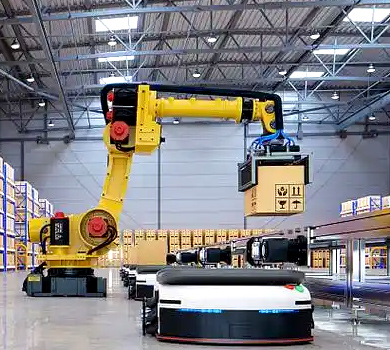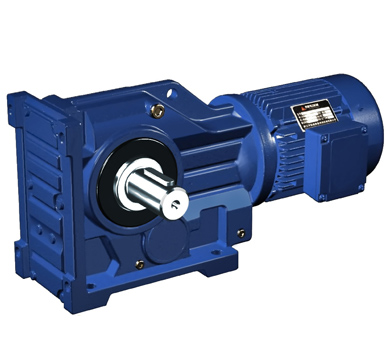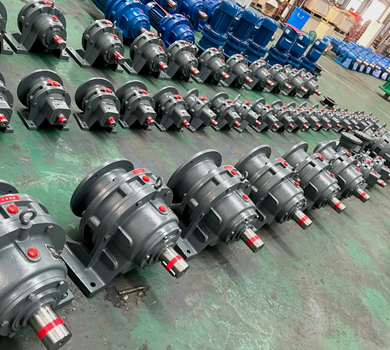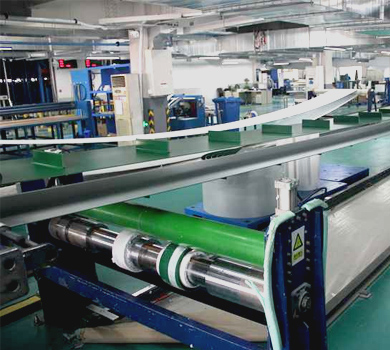Industry Challenges and Pain Points Analysis
The angle adjustment module in vibration feeder systems is a core component in industrial automation, particularly in high-precision feeding and sorting applications. Typically, these systems are composed of a vibration motor, a feeding bowl, a control unit, and an adjustable orientation mechanism. The demand for high accuracy, repeatable positioning, and compact integration is increasing as manufacturers strive for higher productivity and automation levels.
However, the industry faces several critical challenges, especially in the field of transmission systems:
- Low Torque-to-Size Ratio: Many existing systems struggle to achieve sufficient torque in a compact form, leading to oversized solutions.
- Positioning Accuracy and Stability: The angle adjustment mechanism must maintain consistent positioning to ensure feed path accuracy, but most off-the-shelf solutions suffer from backlash or mechanical play.
- Energy Efficiency and Long-Term Operation: Continuous operation in demanding environments leads to rapid wear and energy loss, resulting in high maintenance costs and downtime.
- Space Constraints: Modern production lines require modular, space-saving designs. Many traditional gearboxes are not adaptable to such needs.
Key Role and Technical Requirements of Gearboxes in the Industry
Gearboxes are essential in angle adjustment modules due to their direct impact on system precision and operational efficiency. The core performance requirements for gearboxes in this context are as follows:
- High Torque Density: Ability to deliver high torque in a compact size for integration into tight spaces.
- High Transmission Precision: Minimal backlash and high repeatability to ensure consistent orientation of the vibration bowl.
- Fast Response Speed: Quick actuation for real-time adjustments in automated systems.
- Compatibility with Servo Motors: Seamless integration with modern servo systems for enhanced control and performance.
In addition to these, gearboxes must also meet hidden design requirements, including:
- Environmental Adaptability: Operation in high-temperature or high-dust conditions without performance degradation.
- Long Lifespan: High durability under continuous load and cyclic operation.
- Low Maintenance Frequency: Extended service intervals to reduce operational costs and improve system uptime.
Waimica Planetary Gearbox Solutions for Vibration Feeder Systems
Waimica planetary gearboxes are specifically engineered to address the unique challenges of angle adjustment modules in vibration feeder systems. Our solutions provide a direct match to the following key industry pain points:
- Compact and Modular Design: Waimica’s planetary gearboxes feature a highly integrated structure, enabling seamless installation into tight spaces. The modular approach allows for easy upgrades and replacements.
- High Torque Range and Efficiency: With torque ranges up to 10,000 Nm and high efficiency (90%+), our gearboxes support heavy-duty applications while minimizing energy loss.
- High Precision and Low Backlash: Our precision-grade planetary gearboxes offer backlash as low as 1 arcminute and repeatability within 0.1°, ensuring reliable angle positioning.
- High Environmental Resistance: Waimica gearboxes are built to operate in a wide range of temperatures (-30°C to +100°C) and can be customized for cleanroom or high-dust environments with IP67 or IP69K protection ratings.
| Parameter | Waimica | Competitor Brand |
|---|---|---|
| Backlash | 1 arcmin | 3 arcmin |
| Torque Range | Up to 10,000 Nm | Up to 8,000 Nm |
| Efficiency | 92% | 88% |
| Input Flange Type | ISO 9409-1, ISO 6355 | Customizable |
| IP Rating | IP67 / IP69K | IP65 |
| Mounting Options | Flange, Foot, Shaft Mount | Flange Mount |
Typical Application and Customer Feedback
A customer in the automotive electronics sector required an angle adjustment module for a high-speed vibration feeder used in component assembly. The system was experiencing frequent misalignments and high maintenance costs due to mechanical play and inconsistent positioning.
Waimica’s engineering team conducted a comprehensive site survey, analyzed the existing system, and recommended a customized planetary gearbox solution. The selected unit featured a high-precision gear train, IP67 protection, and a direct ISO flange connection to the customer’s servo motor, allowing for immediate integration without system redesign.
After implementation, the customer reported the following performance improvements:
| Parameter | Before Waimica | After Waimica |
|---|---|---|
| Positioning Repeatability | ±0.5° | ±0.1° |
| Backlash | 5 arcmin | 1 arcmin |
| System Stability Rate | 82% | 97% |
| Service Life | 5,000 hrs | 15,000 hrs |
| Maintenance Interval | Every 1,000 hrs | Every 5,000 hrs |
Conclusion and Waimica Brand Value Summary
Waimica planetary gearboxes offer superior performance in terms of precision, durability, and efficiency. Our tailored engineering approach, combined with robust design and high-quality manufacturing, enables us to deliver solutions that are directly aligned with the operational demands of vibration feeder angle adjustment modules.
As a high-value manufacturer from China, Waimica provides a reliable and cost-effective alternative to overseas brands, with equivalent or better performance. We pride ourselves on our ability to meet strict specifications, deliver on time, and support long-term customization and after-sales service.
With the ongoing evolution of industrial automation, Waimica is well-positioned to support future upgrades in vibration feeding systems. Our long-term R&D investments and close collaboration with end-users ensure that our gearboxes will continue to lead in precision, compactness, and energy efficiency, making us a trusted partner for industrial automation projects globally.









